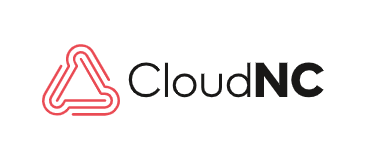
CloudNC - a manufacturing technology company backed by Autodesk and Lockheed Martin - announces its CAM Assist solution is available as a plug-in for Autodesk's Fusion 360 software platform, allowing US manufacturers to precision machine components much more quickly and efficiently.
CAM Assist uses advanced computer science techniques to generate professional machining strategies for 3-axis parts in seconds, which could take CNC machine programmers hours or even days to manually create.
As a result, the amount of time it takes to program a CNC machine to make a component - a bottleneck in many factories - is reduced by up to 80%, compared to the previous manual programming process, saving manufacturers hundreds of production hours a year.
According to CloudNC, that gain enables manufacturers using CAM Assist to raise productivity and shorten lead times. In addition, the software frees up time for experienced programmers, while also allowing junior employees to program more complex parts and be productive faster, helping fill the manufacturing sector’s widening skills gap.
CAM Assist is publicly available to download today, via the Autodesk App Store.
Theo Saville, founder of CloudNC, said: “CAM Assist is the biggest paradigm shift for the precision manufacturing sector in decades, and by being available through the Autodesk App Store, machinists across the US can now benefit. By making CAM programmers faster, CAM Assist enables manufacturers to increase machine uptime, slash lead times, improve process stability, and upskill staff to become expert machinists more quickly. These advances will re-energise precision manufacturing companies struggling with rising costs and aging workforces.”
Chris Moran, vice president and general manager of Lockheed Martin Ventures, said: “We see opportunity where CloudNC’s software solution can capture and automate the vast amounts of historic institutional knowledge within our manufacturing workforce. CloudNC is taking steps to effectively and reliably streamline the manufacturing process, which would help secure our defense industrial base.”
Previously, depending on complexity, it could take a CAM programmer between an hour to several days to determine the best strategy to CNC machine a new component. This includes selecting the correct tools, strategies, and techniques - determining between hundreds of thousands of potential variables and approaches.
Instead, CAM Assist uses advanced computational optimisation and AI inference techniques to rapidly determine a professional strategy and toolset needed to manufacture a part, along with the most appropriate cutting speeds and feeds from the user’s library.
As a result, a Fusion 360 user can today upload a 3D model of a 3-axis component and the software determines the best milling tools needed from those available, and how they will be used. In seconds, CAM Assist drafts the code required to instruct a CNC machine how to make it, within the user’s existing CAM platform.
At its core, CAM Assist is like a machining technician - it has a practical understanding of the physics and processes of cutting metal so it can make the sort of decisions that a machinist would make.
Stephen Hooper, Autodesk Vice President, Design & Manufacturing Product Development, said: “We are very excited to welcome CloudNC to the Fusion industry cloud platform and honored to offer CAM Assist through our App Store. Autodesk is laser focused on leveraging the cloud, AI and data-driven advanced technology to accelerate the design and make process. CloudNC’s transformational technology enables manufacturers to take an easy, immediately impactful step that not only increases their manufacturing efficiency, but also quickly boosts the CNC expertise of the user.”
CloudNC has conducted side-by-side trials of CAM Assist with senior CAM programmers. According to the results, CAM Assist users can reduce programming times by up to 80% in comparison to manual programming methods, saving time for more senior programmers by completing tasks associated with program set-up and toolpath creation.
New users can also use CAM Assist to start to learn how to use software platforms like Fusion 360 far faster, producing components on the day of first use.
While the software today performs best with 3-axis components, multi-axis and freeform capability will be accessible to beta customers shortly.
Mr. Saville said: “The US is missing out on tens of billions of dollars a year in lost output because of the manufacturing skills gap, as there isn’t the skilled labor to make the components that corporations need. CAM Assist is the solution to that problem - it frees up time for senior programmers, and helps unskilled workers get up to speed far faster. If you’re a workshop owner, it’s what you’ve been looking for: it allows someone who’s never previously used Fusion 360 before to start making components on the day of first use, all within an existing CAM package.”
CAM Assist is available for CAM and CAD programmers using Autodesk Fusion 360 at https://www.cloudnc.com.
Contact Details
Related Glossary Terms
- computer numerical control ( CNC)
computer numerical control ( CNC)
Microprocessor-based controller dedicated to a machine tool that permits the creation or modification of parts. Programmed numerical control activates the machine’s servos and spindle drives and controls the various machining operations. See DNC, direct numerical control; NC, numerical control.
- computer-aided design ( CAD)
computer-aided design ( CAD)
Product-design functions performed with the help of computers and special software.
- computer-aided manufacturing ( CAM)
computer-aided manufacturing ( CAM)
Use of computers to control machining and manufacturing processes.
- gang cutting ( milling)
gang cutting ( milling)
Machining with several cutters mounted on a single arbor, generally for simultaneous cutting.
- milling
milling
Machining operation in which metal or other material is removed by applying power to a rotating cutter. In vertical milling, the cutting tool is mounted vertically on the spindle. In horizontal milling, the cutting tool is mounted horizontally, either directly on the spindle or on an arbor. Horizontal milling is further broken down into conventional milling, where the cutter rotates opposite the direction of feed, or “up” into the workpiece; and climb milling, where the cutter rotates in the direction of feed, or “down” into the workpiece. Milling operations include plane or surface milling, endmilling, facemilling, angle milling, form milling and profiling.
- toolpath( cutter path)
toolpath( cutter path)
2-D or 3-D path generated by program code or a CAM system and followed by tool when machining a part.

